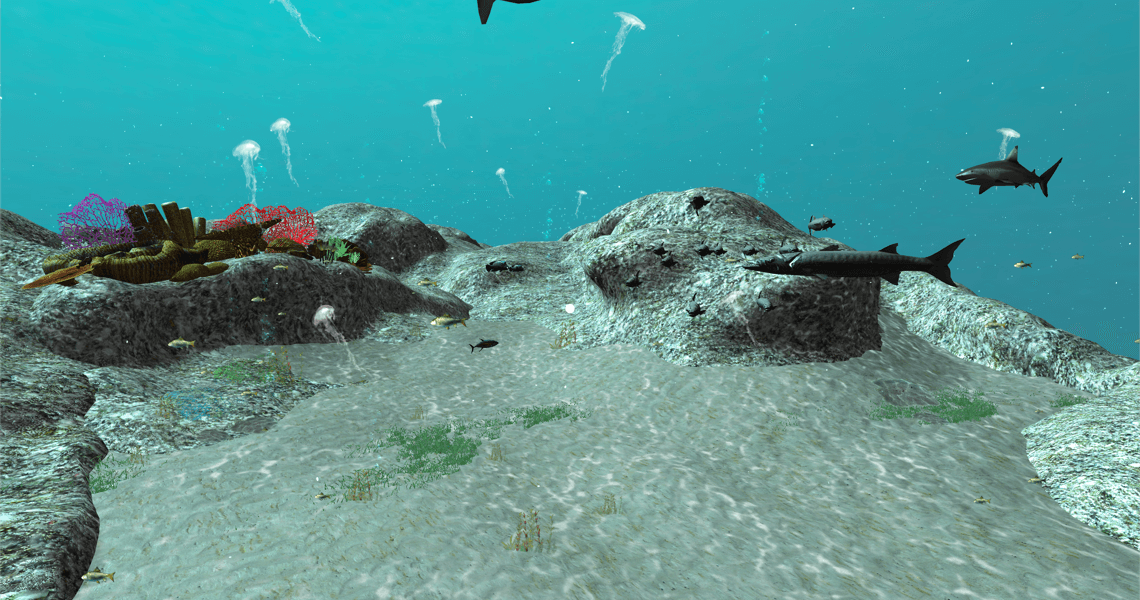DiVR is a VR mobile application compatible with an iOS device. In order for the users to get the full immersive experience, they must use it with Google Cardboard or any VR headset with a button.
The application will have three main sections, which are the levels of the ocean. Currently, there are three sea creatures that a user can interact with. Later on, I plan to add more sea creatures for each level. The three levels of the ocean are: sunlight zone, twilight zone, and midnight zone. For my thesis presentation, the sunlight zone is the most complete in terms of content.
The purpose of this project is to immerse the users in an environment that isn’t familiar to them and at the same time exposing them to the different parts of the ocean. It’s also a way to show people the different kinds of sea creatures they may encounter should they decide to scuba dive in the future.
Not a lot of people have access to the ocean and can just scuba dive. Many people are only familiar with the common sea creatures they see in an aquarium such as, sharks, turtles, and jellyfish. Yet there are still so many sea creatures that people can learn about.
To create an underwater VR mobile app to show people the different kinds of sea creatures that inhabit each level of the ocean.
Listed below are the three main levels of the application.

The Sunlight Zone is the uppermost part of the ocean that gets exposed to the sun during the daytime. It’s also called the Euphotic Zone. This is where most of the sea creatures familiar to everyone belong.
• Curious about wildlife
• Body of water is not easily accessible
• Owns a smart phone
• Men and women
• 18-40 years old
• Environmentally conscious
• Wants to learn about the not-so-common animals found in the ocean
• Wants to incorporate technology while learning
• Up to date with the latest technology
• Medium-heavy mobile phone user
• Curious about the ocean
• Grew up with technology
• Parents are familiar with the latest technology
• Body of water is not easily accessible
• Boys and girls
• 9-13 years old
• Wants to learn about the not-so-common animals found in the ocean
• Wants to have fun while learning
• Familiar with technology
• Uses technology to supplement their education
• Curious about the animals and the environment
Initially, the application was supposed to be a mobile application that will help new scuba divers learn about different kinds of equipment and will be able to checkout several divesites around the world.
After several rounds of user testing, I decided to make DiVR an immersive VR application instead, showing people the three main levels of the ocean and the sea creatures that inhabit each level.
Jake downloads the app, opens the app, puts on the Google cardboard, Open the main menu, and is brought to the first level of the ocean.
Outcome:
Gets to the first level of the ocean.
Jake hears the narrator as soon as he reaches the Sunlight Zone and is prompted to move around the ocean and interact with some creatures.
Outcome:
He knows how to work the app.
After Jake learns how to use the app and hears the narrator for the first time, he must learn about the sea creatures he encounters in the Sunlight Zone.
Outcome:
He learns a few facts about all the sea creature he encounters.
After Jake learns about three sea creatures in the Sunlight Zone, he can now move on to the second level of the ocean, the Twilight Zone.
Outcome:
He is in the second level of the ocean.